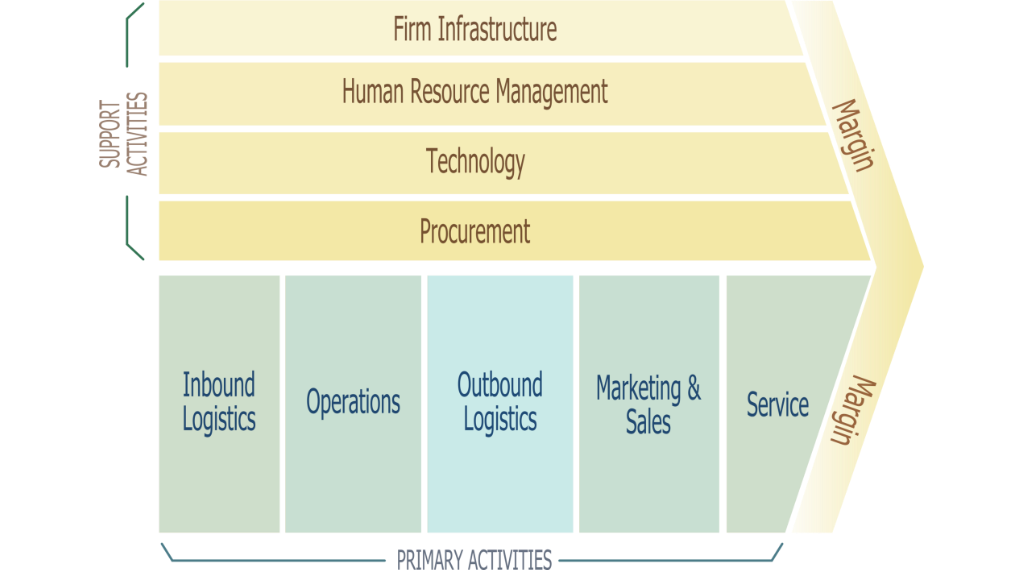The Value Chain
Harvard’s Michael Porter has proposed the value chain as a tool for identifying ways to create more customer value.
According to this model, every firm is a synthesis of activities performed to design, produce, market, deliver, and support its product.
Nine strategically relevant activities—five primary and four support activities—create value and cost in a specific business.

The primary activities are
- inbound logistics, or bringing materials into the business;
- operations, or converting materials into final products;
- outbound logistics, or shipping out final products;
- marketing, which includes sales; and
- service.
Specialized departments handle the support activities;
- procurement,
- technology development,
- human resource management,
- and firm infrastructure (including general management, planning, finance, accounting, legal, and government affairs).
The firm’s task is to examine its costs and performance in each value-creating activity, benchmarking against competitors, and look for ways to improve.
Even the best companies can benchmark, against other industries if necessary, to improve their performance.
The firm’s success depends not only on how well each department performs its work but also on how well the company coordinates departmental activities to conduct core business processes.
These processes include:
- The market-sensing process—gathering and acting upon information about the market
- The new-offering realization process—researching, developing, and launching new high-quality offerings quickly and within budget
- The customer acquisition process—defining target markets and prospecting for new customers
- The customer relationship management process—building deeper understanding of, rela-tionships with, and offerings for individual customers
- The fulfillment management process—receiving and approving orders, shipping goods on time, and collecting payment
Strong companies are reengineering their work flows and building cross-functional teams to be responsible for each process.
Ford established a cross-functional team to help reduce water usage per vehicle by 30 percent.
A firm also needs to look for competitive advantages beyond its own operations in the value chains of suppliers, distributors, and customers.
Many companies have partnered with specific suppliers and distributors to create a superior value delivery network, also called a supply chain.
